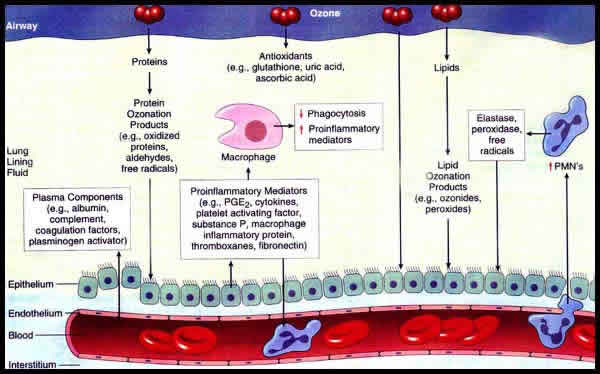Figure 3: Ozone is highly reactive in the respiratory tract.When breathed into the airways, ozone interacts with proteins and lipids on the surface of cells or present in the lung lining fluid, which decreases in depth from 10 µm in the large airways to 0.2 µm in the alveolar region. Epithelial cells lining the respiratory tract are the main target of ozone and its products. These cells become injured and leak intracellular enzymes such as lactate dehydrogenase into the airway lumen, as well as plasma components. Epithelial cells also release a variety of inflammatory mediators that can attract PMNs into the lung, activate alveolar macrophages, and initiate a train of events leading to lung inflammation. Antioxidants present in cells and lining fluid may protect the epithelial barrier against damage by ozone or its reaction products.
Source: Devlin et al., (1997)
